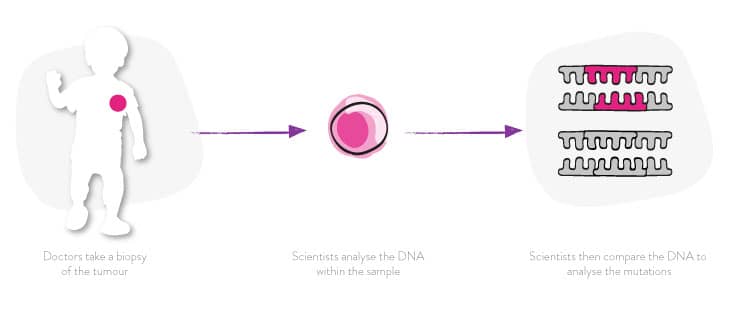JOSH'S STORY
In February of 2021, Josh’s parents noticed he was getting very pale. What was originally thought to...
Read MoreEach year, National DNA day marks the date that the Human Genome Project was completed. To mark the anniversary, we take a look at why the Human Genome Project was so monumental for Cancer Research, and how it has helped to propel us forward in the quest to find safer and more precise treatments for children’s cancer.
What is DNA exactly?
DNA is the blueprint for building a human being and is basically a long code made up of a combination of 4-chemicals, or bases that can be abbreviated as the letters, A,T,G and C. This short alphabet exists in varied patterns or combinations, which can be grouped together into units that we know as genes. This combination of letters (chemicals) within a gene, defines exactly how you will look, develop and function throughout your life.
The Human Genome Project
Deciphering DNA has always proven to be extremely complicated because the combination of letters that define certain traits don’t just sit in one single gene. Initiated in 1990, the 15-year Human Genome Project set out to provide a map of the human genome. On completion, it gave scientists the ability to read the entire, and unique, combination of letters in a person’s DNA code.
But how does the ability to read a person’s DNA code link to cancer research?
By comparing a sample of DNA from a patients cancerous cells – to the map produced by the human genome project – scientists can now identify the exact cause of an individual’s cancer.
And, thanks to recent advances in the speed that scientists can now read a patients DNA code – they have now been able to identify exactly how many mutations in a cell’s DNA code are required for a cell to become cancerous, in a number of cancer types.

Studies like this on large numbers of patients, along with the results of the Human Genome Project have truly propelled cancer research. By understanding which mutations caused cancer to occur in a particular patient, scientists can now explore the use of techniques such as gene therapy, gene editing and other treatments that target specifically the cause of the cancer based on the patients’ DNA code.
These precision therapies are one of the most exciting developments in children’s cancer research – in the future it will be possible to treat cancer without causing lifelong side-effects of standard treatments such as chemotherapies, that blight the lives of more than two thirds of childhood cancer survivors.
In February of 2021, Josh’s parents noticed he was getting very pale. What was originally thought to...
Read MoreWhat a whopper of a night - Friday 20th May, our ambassador Isla's mum Jill and family hosted...
Read MoreWe want to say a huge thank you to Lee Mossop, former Captain of RFL Salford Red...
Read More